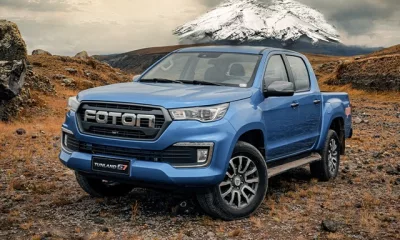Luxury vehicle brands are expected to make up 11 per cent of global car sales by 2010 – and this will have a positive effect on the South African motor industry, Trade and Investment SA says.
Luxury vehicle brands are expected to make up 11 per cent of global car sales by 2010 – and this will have a positive effect on the South African motor industry, Trade and Investment SA says.
Analysts forecast that up-market vehicle brands would increase from eight to 11 per cent of total sales by 2010. quoted from a Tisa report that said the trend would have a positive effect on particularly the South African motor industry, because 90,2 per cent of the completely built-up vehicle exports last year were passenger cars – of which 97,3 per cent were built by luxury-car manufacturers BMW SA, DaimlerChrysler SA and Volkswagen SA.
The report said premium car manufacturers were also likely to benefit from domestic market trends.
“Despite weaker domestic sales of new cars, the phenomenon of the South African market was that domestically-assembled premium brands sold well,” the report said. “One in three new cars sold in South Africa was priced above R200 000 and the luxury car market ratio was substantially bigger in South Africa than in other countries.
“Most of these premium cars were financed and bought by companies. This factor contributed to the original equipment manufacturers’ profitability in 2002,” the report added.
Meanwhile, the profit performance of the eight manufacturers in South Africa, based on Tisa’s annual survey, improved 10,4 per cent to R4,1 billion between 2001 and last year.
Tisa said the expanding margins could be attributed to higher export volumes and benefits of economies of scale, although the exchange rate impacted differently on individual manufacturers. For example, two manufacturers recorded marginal losses last year but overall the picture improved.
Total automotive industry exports rose by 33,7 per cent in rand terms from 2001 to R40,1 billion last year and the industry had achieved a compound annual growth rate of 38 per cent since 1995, the report stated.
The outlook for the industry was bright in terms of both exports and the domestic market, Tisa said, but a key challenge “was to raise the local content, particularly in the vehicles now being exported in large volumes”.
“Apart from creating jobs, higher local content would lend stability to the industry and substantially reduce logistical costs. More integration with a greater link between component exports and domestic supply will also be a focus area,” the report stated. “The industry has made productivity gains and the expansion in output is likely to translate into employment growth.”




